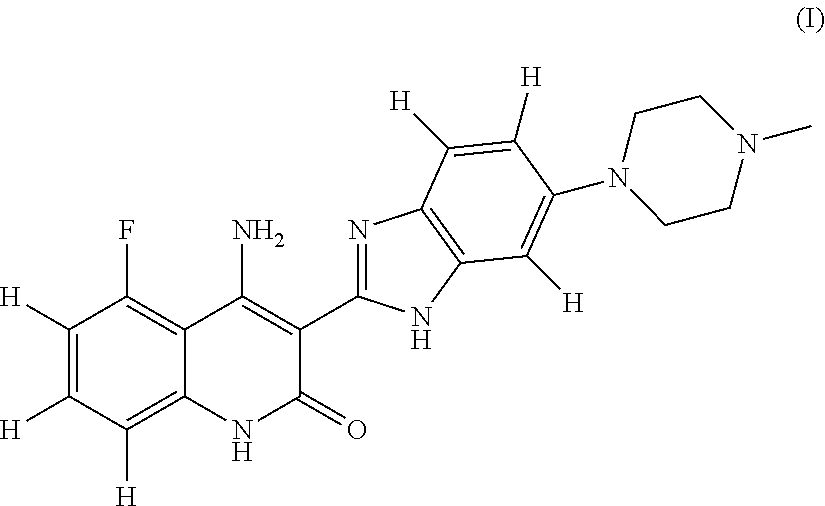FGFR and ligands thereof as biomarkers for breast cancer in hr positive subjects
- Summary
- Abstract
- Description
- Claims
- Application Information
AI Technical Summary
Benefits of technology
Problems solved by technology
Method used
Image
Examples
example 1
[0033]Clinical Study to Test Efficacy of Dovitinib in FGFR1 Amplified and Non-Amplified Metastatic Breast Cancer
[0034]A multicenter, open-label phase 2 trial of dovitinib was conducted to evaluate the clinical activity of dovitinib and to test the clinical efficacy in FGFR1 amplified and non-amplified metastatic breast cancer. The efficacy and safety of dovitinib was studied in 4 groups of metastatic breast cancer patients: (Group 1: FGFR1+, HR+), (Group 2: FGFR1+, HR−) (Group 3: FGFR1−, HR+), (Group 4: FGFR1−, HR−). Patient selection was performed according to FISH / CISH for FGFR1 (cut-off≧6 gene copies). Dovitinib (500 mg) was administered once daily on a 5-day on / 2-day off schedule. The primary endpoint was RECIST best overall response rate in pts with measurable disease per external radiology review.
[0035]Inclusion Criteria:[0036]1. Patients have histological confirmation of breast carcinoma with a clinical diagnosis of IBC based on presence of inflammatory changes in the involve...
example 2
Clinical Study to Test Efficacy of an FGFR1 Inhibitor (Dovitinib) in Patients with FGFR1-Amplified Breast Cancers
[0058]After analyzing the results of the clinical study of dovitinib from patient groups 1, 3 and 4, exploratory analyses were also performed to further evaluate clinical responses in patients with tumors bearing additional gene amplifications. Amplifications of FGF ligands (FGF3, FGF4, FGF19) as well as FGFR2 gene amplification were also performed as pre-defined in a protocol. The protocol describes methods used for copy number analysis for FGFR1 and FGF3 gene using ABI's pre-designed TaqMan™ copy number assays.
[0059]Method Summary
[0060]TaqMan® Copy Number Assays for FGFR1 and FGF3 were ordered from Applied Biosystems and are run together with a TaqMan® Copy Number Reference Assay in a duplex real-time Polymerase Chain Reaction (PCR). The Copy Number Assay detects the target gene of interest (FGFR1 or FGF3 in this case) and the Reference Assay (RNase P) detects a sequenc...
PUM
 Login to View More
Login to View More Abstract
Description
Claims
Application Information
 Login to View More
Login to View More - R&D
- Intellectual Property
- Life Sciences
- Materials
- Tech Scout
- Unparalleled Data Quality
- Higher Quality Content
- 60% Fewer Hallucinations
Browse by: Latest US Patents, China's latest patents, Technical Efficacy Thesaurus, Application Domain, Technology Topic, Popular Technical Reports.
© 2025 PatSnap. All rights reserved.Legal|Privacy policy|Modern Slavery Act Transparency Statement|Sitemap|About US| Contact US: help@patsnap.com

